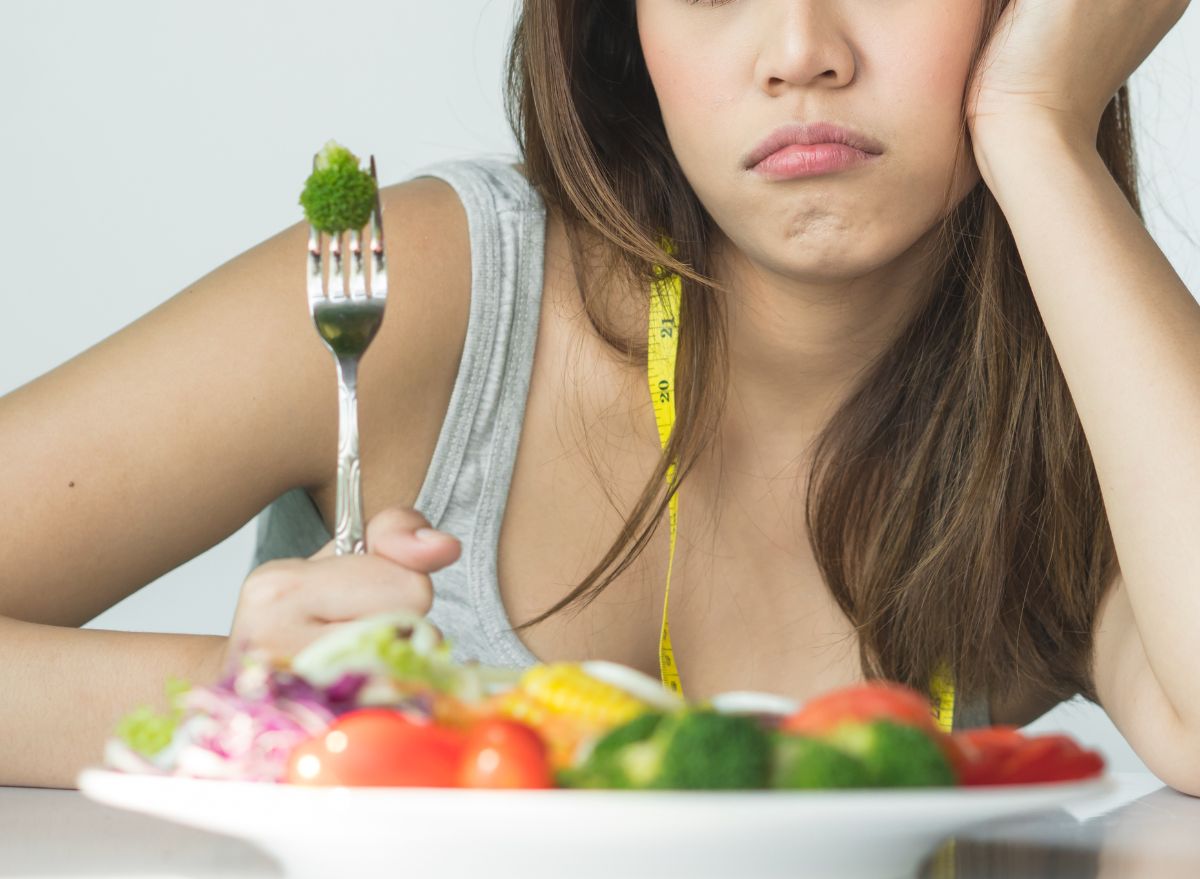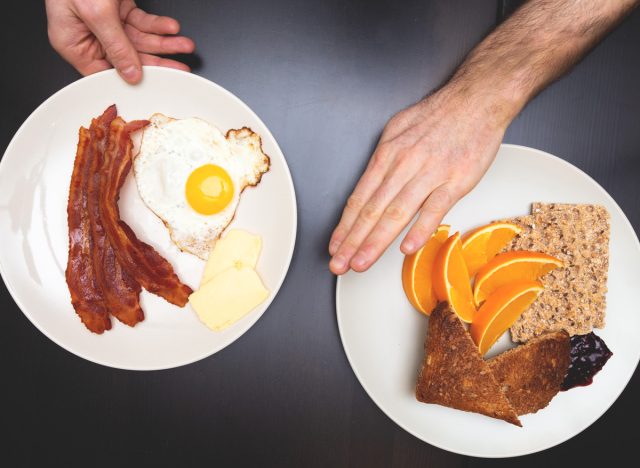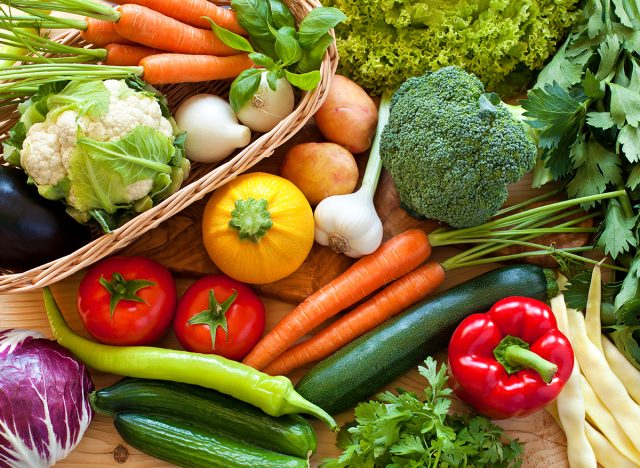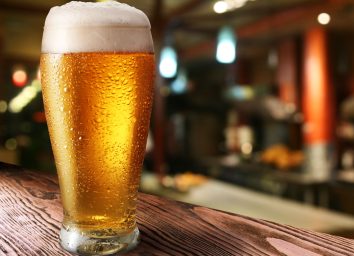US News Announces the Best Diets of 2023—And the Lowest Ranking Ones May Surprise You

Each year, U.S. News & World Report releases a list of the best overall diets. Each diet is ranked by a panel of leading medical and nutrition experts. The 33 experts rate each diet in 11 categories including nutrition, short and long-term weight loss, ease of compliance, and safety. As a dietitian, the top diets of 2023 including the Mediterranean, DASH, and Flexitarian don’t surprise me at all. These are healthy diets in line with safe and well-balanced nutrition concepts. And unfortunately, the worst diets on the list don’t surprise me either.
In a solid weight loss plan, there are certainly markers I look for as a dietitian. This includes an all-inclusive diet with a variety of foods, including fruits, vegetables, starches, proteins, milk and dairy foods, and healthy fats. In addition, the rate of weight loss recommended is extremely important. According to the National Institute of Heath, a safe rate of weight loss is between one to two pounds per week. Losing weight too quickly can affect your health, including a drop of blood pressure, dehydration, and electrolyte imbalance.
The amount of calories taken in is also important for a weight loss diet. Anything less than 1,200 calories can be dangerous to your health. That is why the NIH recommends working with your doctor and registered dietitian if you choose to go on a very low-calorie diet under this amount. The lowest-ranked diets have numerous red flags that include some of the issues listed above, but also have numerous other counter indications that put them at the bottom of the list. Here’s why these 5 diets are the lowest ranking diets of 2023 according to U.S News.
The Keto diet

Ranking at 20 out of 24 diets is the super popular Keto diet. This plan is a high-fat, moderate-protein, and low-carb diet consisting of 70-75% fat, 20-25% protein, and 5-10% carbs. As the primary source of energy in the body is carbs, the premise of this plan is that if you eat a very low-carb diet, your body will turn fat into ketone bodies, which can be used as fuel.
This means that most of your food comes from pure fat like olive oil or coconut oil, and some of your foods come from protein like eggs, chicken, and fish. Getting into ketosis takes anywhere from a few days to about a week, and dieters tend to have symptoms like fatigue, hunger, nausea, headaches, and overall fogginess (called the Keto Flu). Weight loss can occur, but how long can you really eat like this?
This diet made it to the bottom 5 because:
- It is not a sustainable diet.
- It eliminates and limits many foods, which cuts out important nutrients your body needs to stay healthy.
- You don’t learn healthy eating behaviors, so once you get off this plan, you’ll likely go back to eating like before and regain the weight.
- Counting the carbs, fat, and protein of every food gets very tedious and can interfere with adherence.
- It’s very difficult to eat out and attend social events where food is served.
- There is evidence that the Keto diet isn’t safe when followed long-term. A 2014 published review discusses the science behind safety concerns of following a ketogenic diet, including the concern for the effects on renal function. In addition, a study published in the American Journal of Clinical Nutrition found that long-term adherence to a ketogenic diet in children with intractable epilepsy may lead to reduction in bone mineral content. This brings about concern for adults, especially those prone to osteoporosis (a disease where bones become brittle and easily break).
The Atkins diet
The Atkins diet tied at number 21 out of 24 for the lowest ranking diets of 2023. Dr. Atkins’ original diet eliminated refined sugars and most carbohydrates (including most fruits and vegetables), while focusing on eating animal proteins like chicken, cheese, red meat, and fish in order to lose weight and improve health. Atkins also has bars, shakes, snacks, cookies, and protein chips available for purchase on their website. Although the plan has been updated with several new options, the basic phases are similar. The four phases include:
- Phase 1 (Induction): Lasting 14 days, this initial phase has you eating no more than 20 grams of net carbs a day. Net carbs are calculated by subtracting total grams of fiber from total carbohydrates. Between 12 to 15 grams of carbs come from non-starchy veggies (called “foundation vegetables”) like tomatoes and broccoli.
- Phase 2 (Balancing): To meet your 12 to 15 grams of net carbs per day, this phase has you focusing on eating your “foundation vegetables.” Veggies, berries, nuts and seeds can gradually be added to your diet. You stay in this phase until you’re within 10 pounds of your goal weight.
- Phase 3 (Pre-maintenance): Carbs are increased by about 10 grams per week on this phase until you reach your goal weight. Your menu continues to allow more varieties of food like more fruits, starchy vegetables, and whole grains.
- Phase 4 (Maintenance): This is a lifelong maintenance phase to keep the weight off. Most maintain between 40 to 120 grams of net carbs per day in order to maintain their weight loss.
This diet made it to the bottom 5 because:
- Part or all of certain food groups are extremely minimized or eliminated. This can potentially lead to nutritional deficiencies. Fiber is one nutrient that you’re probably not getting enough of on this plan.
- It is tedious to keep counting carbs, which can limit adherence to this plan.
- It is not easy to eat out at restaurants or attend parties where food is offered.
- There is little research to really back up the long-term effectiveness of this plan.
The Optavia diet
Optavia tied at number 21 out of 24 in the best diet for weight loss. It is a newer version of the popular Medifast diet, which is a low-carb, low-calorie weight loss plan. Much of the plan has you buying pre-packaged foods called Fuelings. Dieters are matched with an independent coach to help them learn healthy habits. Most of these coaches tend to be former Optavia customers.
The three programs available:
- Optimal Health 3 & 3 plan: You eat six times a day with three Fuelings and three “balanced” meals. A meal or Fueling is consumed every 2 to 3 hours.
- Optimal Weight 5 & 1 plan: On this plan, you eat five Fuelings a day. Fuelings include shakes, bars, soup, or cereal. All Fueling provide protein and a probiotic to help with gut health. The sixth meal is a Lean & Green Meal that you cook and is carb-controlled, has a lean protein, colorful veggies, and healthy fats.
- Optimal Weight 4 & 2 & 1 plan: This more flexible plan has four Fuelings, two Lean & Green Meals, and one healthy snack like a baked potato or fruit. It is also appropriate for someone with an active lifestyle or regular exercise.
Optavia is one of the lowest ranking diets of 2023 because:
- It’s a low-calorie plan, and a very low-calorie diet (less than 1,200 calories) can be dangerous unless supervised by a medical professional.
- Because it’s so low in calories and carbohydrates, health issues may occur, including leg cramps, fatigue, hair loss, constipation, bad breath, gallstones, and even menstrual changes.
- The food and calories are limited, which can put dieters at risk for deficiencies. On this plan, calcium, fiber, and potassium are nutrients that dieters will probably fall short of and are also pointed out by the 2020-2025 Dietary Guidelines for Americans as already under-consumed nutrients by peoples of all ages.
- Buying these products can get expensive.
- It is not a plan for everyone. Pregnant and nursing women, people with gout, and those with serious illnesses like liver disease, kidney disease, cancer, and eating disorders shouldn’t follow this diet.
The SlimFast diet
The SlimFast diet tied with Optavia and Atkins for the 21st spot out of 24. This diet is a meal replacement plan where two meals per day are replaced with SlimFast shakes, smoothies, or bars. It is a plan that allows for up to three SlimFast-approved snacks in between meals. The updated version now has a mobile app that offers recipes and more, and the diet claims that you will notice results in as little as one week.
This diet made it to the bottom 5 because:
- The food is expensive. A 14-day starter kit costs between $79.99 to $96.99, which includes shakes, powder for smoothies, and bars.
- The meal replacements aren’t super tasty. I’ve tried them, and it just wasn’t the same as eating a real meal.
- There is no end date for your weight loss journey.
- The shakes and bars can become monotonous and boring.
- Weight maintenance after weight loss is an important step that isn’t well promoted or explained once you’ve lost your weight.
- Dining out and attending parties may be difficult while following this plan.
- This type of restricted diet can increase disordered eating behaviors, alter fullness cues, and lead to weight cycling (when your weight goes up and down over time).
The Raw Food diet

Although this plan may sound super healthy, it ranked last (24 out of 24) in U.S. News’ list of best diets for weight loss. The theory behind this plan is that foods contain natural enzymes that are destroyed if food is cooked above 116 degrees. You will lose weight on this diet, as the calories are low and you don’t eat any calorie-heavy processed food. Many followers of this plan use juicing, dehydrating, or germinating and sprouting to prepare foods, but many of these pieces of kitchen equipment are costly.
This is one of the lowest ranking diets of 2023 because:
- Equipment to follow this diet can be costly.
- Eating too few calories can be dangerous to your health. One published study followed dieters for about 4 years and found that 30% of the women lost their menstrual cycle.
- Food safety is an issue if you’re not cooking foods to the proper minimal internal cooking temperatures to kill pathogenic microorganisms. This includes consumption of unpasteurized milk and dairy foods, especially for folks with compromised immune systems, those who are pregnant and lactating, and folks over the age of 70.
- The theory that raw is better than cooked food is unfounded. Some foods like canned cooked tomatoes actually have more of an antioxidant called lycopene compared to raw versions.
- There is a risk of nutritional deficiency especially if you don’t eat dairy, meat, or fish. Other foods that are typically not eaten on a raw food diet include beans and grains, since they need to be cooked.









